“The notion of the found object as artistic material, content and subject-matter provides the inspiration for The Everyday and Extraordinary, an exhibition… Whether modified, presented in a new context or left unchanged found objects have had an enduring impact on artistic practice, with artists appropriating and transforming objects in many ways to communicate particular ideas or concepts. Surrealists used ‘the everyday’ as an invocation of humour and satire whilst Pop Artists directly appropriated items from popular culture”
Towner Gallery Eastbourne, description for an exhibition 29th September 2018 until 6th January 2019
What this pompous description states is the obvious – that artists use what they see or find around them as a starting point. Whether it is a wheat field by Van Gogh, a grass field by Wyeth, a picnic table by Caulfield or an unmade bed by Emin, artists take from what they see or experience and transform it into a reflection of their own world, whether mental angst, romanticised observation, simple memory, or sensual moments revisited to share with and to entrance an audience. 
I have worked lately from the flowers in my garden, although post inspirations have included Brighton seafront, the moors above Blackburn, Seaford’s beach and waves, much of which you will find reflected in my past works. I see; therefore, I am. Every morning I contribute to the BBC Weather images, using the same view down my garden. For 3 years now, I have taken this image, over a thousand reports, the only changes to which are largely those due just to the weather. This year has been a particularly fine one too, with, at one stage, an unbroken run of 59 days without rain.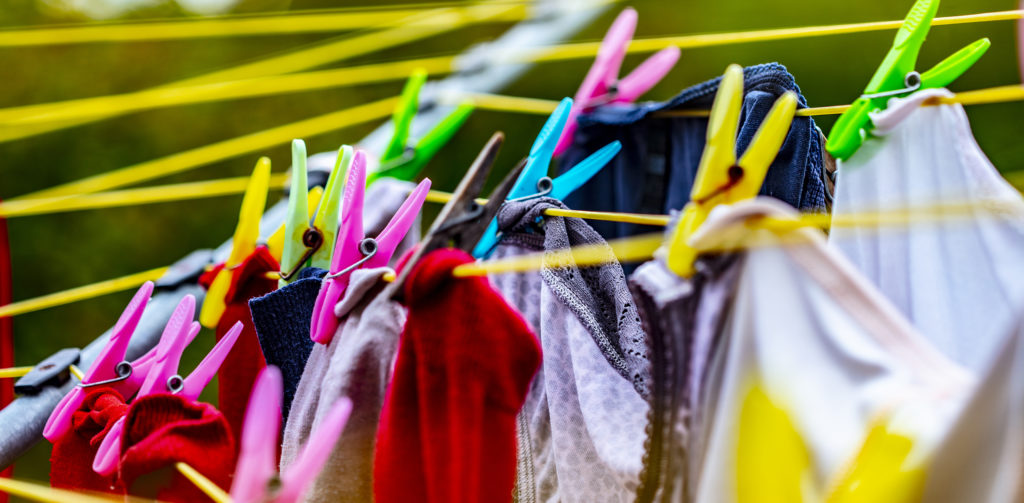
The images are not unchanged, as the garden grows and flowers through the seasons even if the same blue sky is there day after day. The fine weather meant that when Andrea visited from Seattle she was heard to exclaim “my god, but you air dry!” on seeing the washing line in the garden. Another element with the garden along with umbrellas, that impinges on and changes the view, the dryer is more environmentally friendly than a tumble dryer. We use the geometric post washing line at every opportunity, and Andrea’s remark made me realise that I too needed to look at it with fresh eyes, and, inevitably, the camera and sketch book.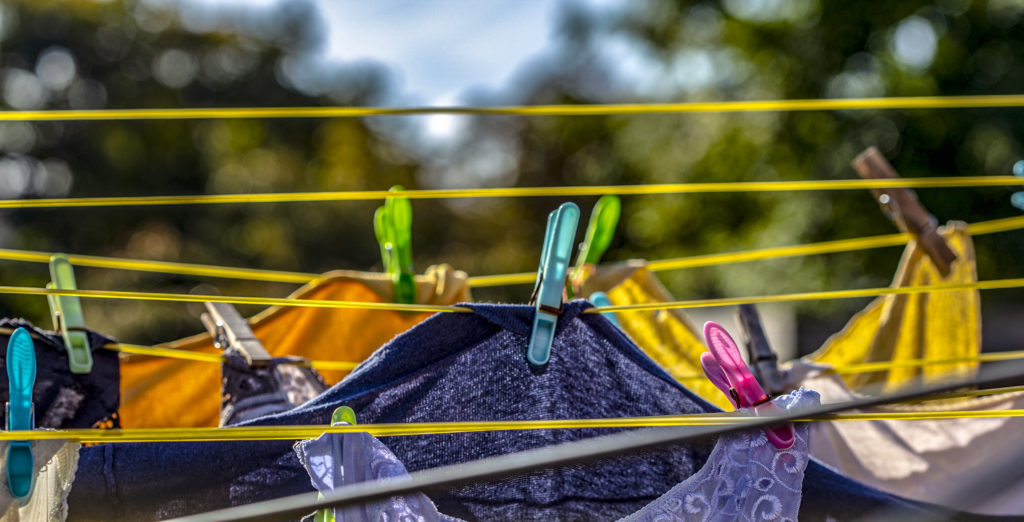
Part of the attraction was the strong geometry of the yellow plastic lines over their metal frame with the randomness of the hanging of the varied garments. Even more random was the resulting arrangement of the coloured pegs (‘pins’ in American English). Plucked unseen from the bag of pegs these showed their strong hue against the colour, texture and pattern of the fabrics – lacy knickers, strongly coloured cotton garments, checked shirts, woollen items and more.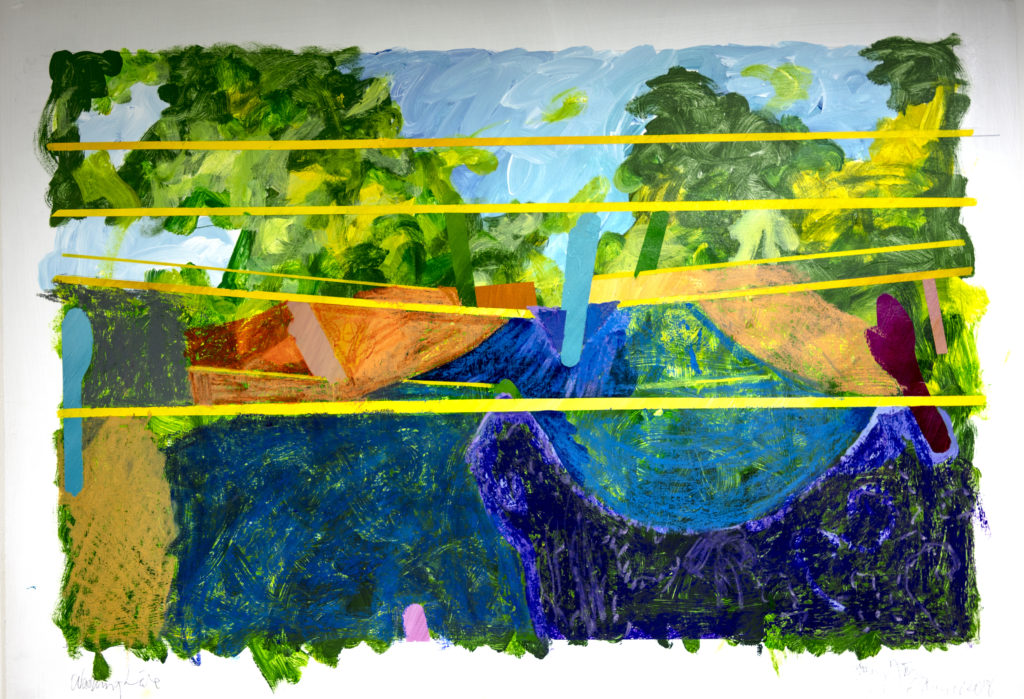
Tuning the images on the computer produced exaggerations of these relationships – depth of field, white balance, focus, lens types all changed the look even before I started to slightly move the sharpness and colour balances. Printing out the most interesting sparked a series of works which are now moving towards the first large painting. Drawings of the pegs resulted in a couple of collages in which different drawings were cut and drawn together before I started to narrow the focus on to the colour and texture – similar concerns to the focus that appeared in the poppy series.
Other work looked in a more representational way at the line. But I abandoned the representational years ago, surrendering that ground to my cameras, looking beyond in the way Impressionist, Cubist, Vorticist, Surrealist, Hyperrealist, and all the other art-ists have done, seeking to find my own way to portray the beauty and complexity of my world. So even when it appears now it is a way point, an indicator for forward direction, not a result in itself.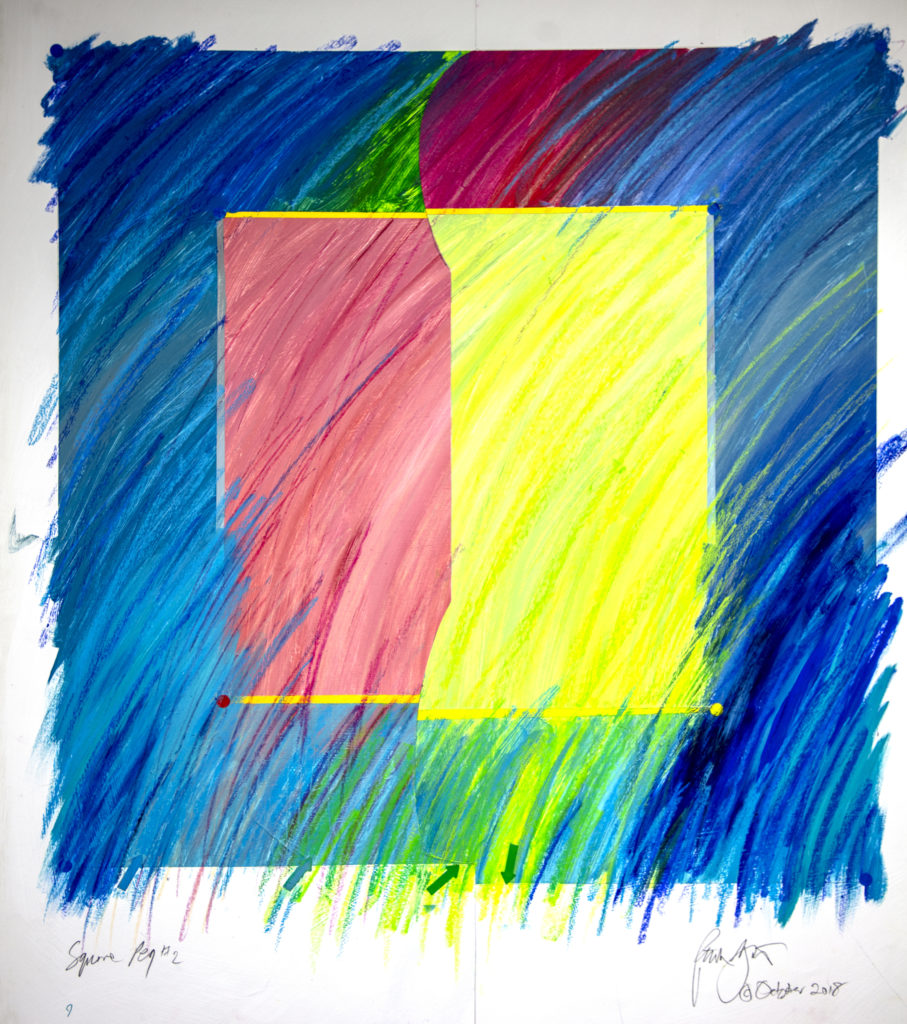
Now the investigations become more linear as I explore the balance between geometry and the random scatter of colour. The control is the washing line itself from which wedges of colour hang suspended from the bright splashes of the pegs. Lines create a tension across the surface I now must resolve in relationship to the rectangle of the canvas. Scale too will be important both in how the brush mark relates to the imagery and to the surface and in how the colour blocks work against the tension created by the geometry.
All I have explored in the previous oil pastel/paint combinations is now feeding into progress. I seek to show how order and randomness co-exist. I’m sure somewhere there is a mathematical formula somewhere which shows that they are both one and the same? Where this exploration will take me is the journey to be followed. Better to travel than arrive?
The Towner’s exhibition is, by the way, a joy to visit.
See my studio reports on a dedicated Facebook studio page

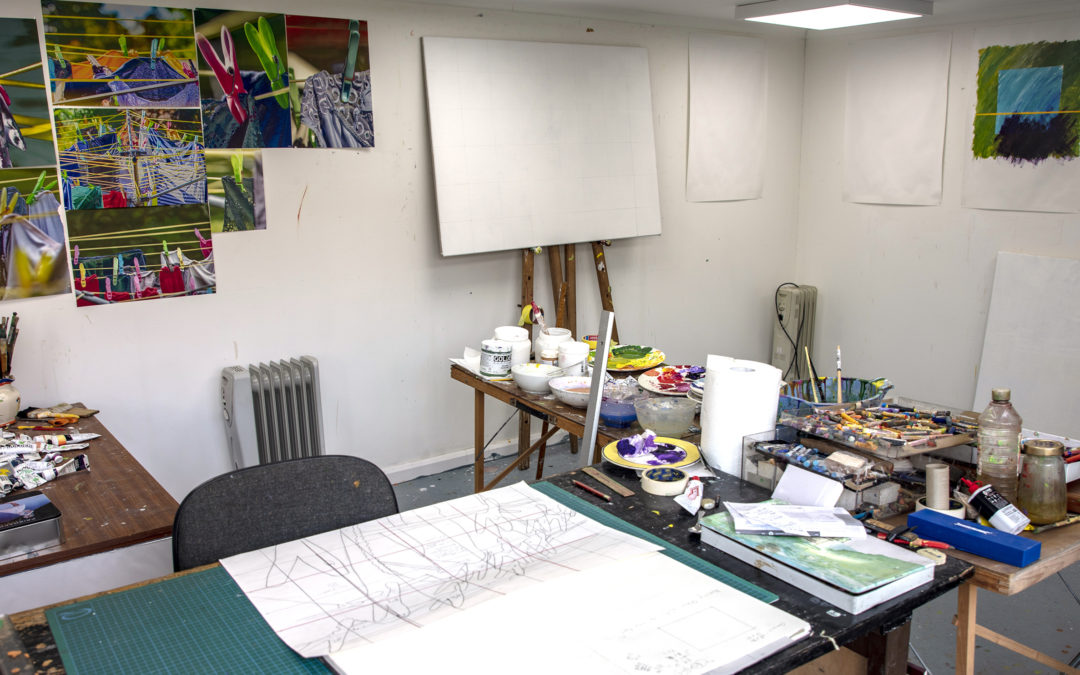
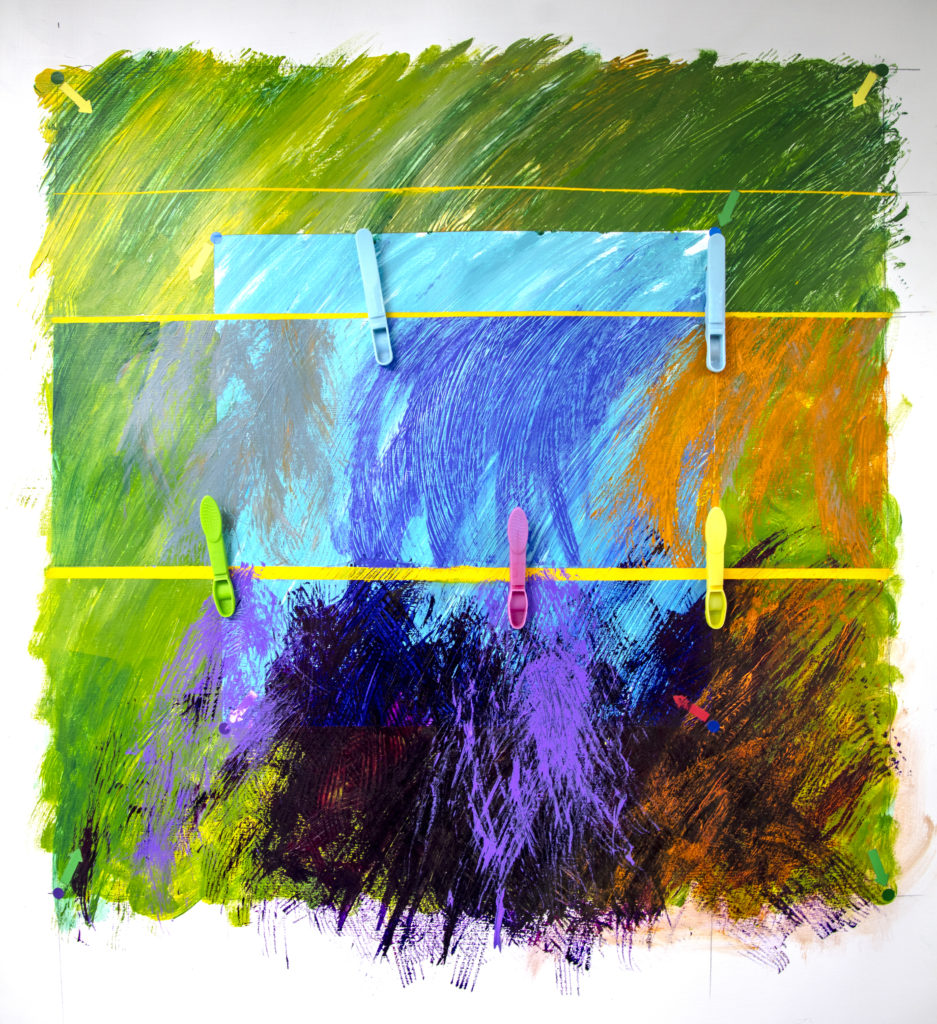
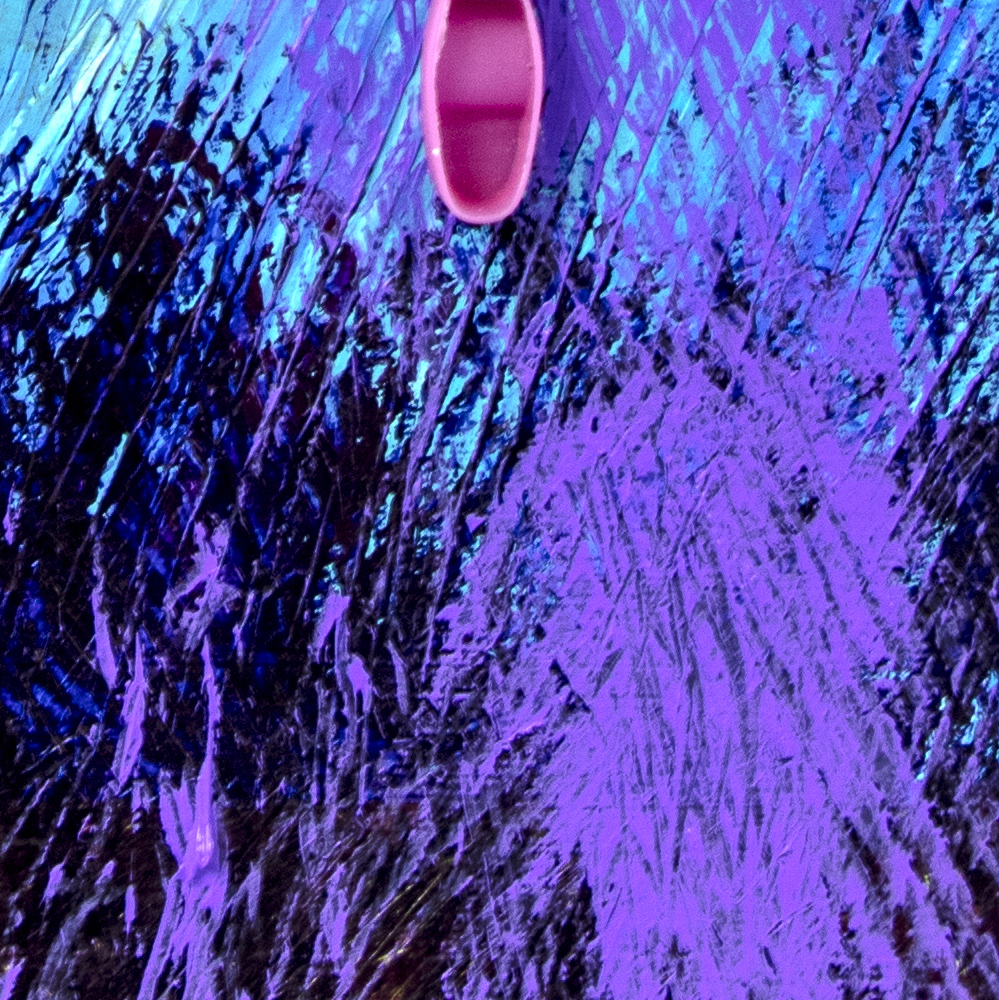
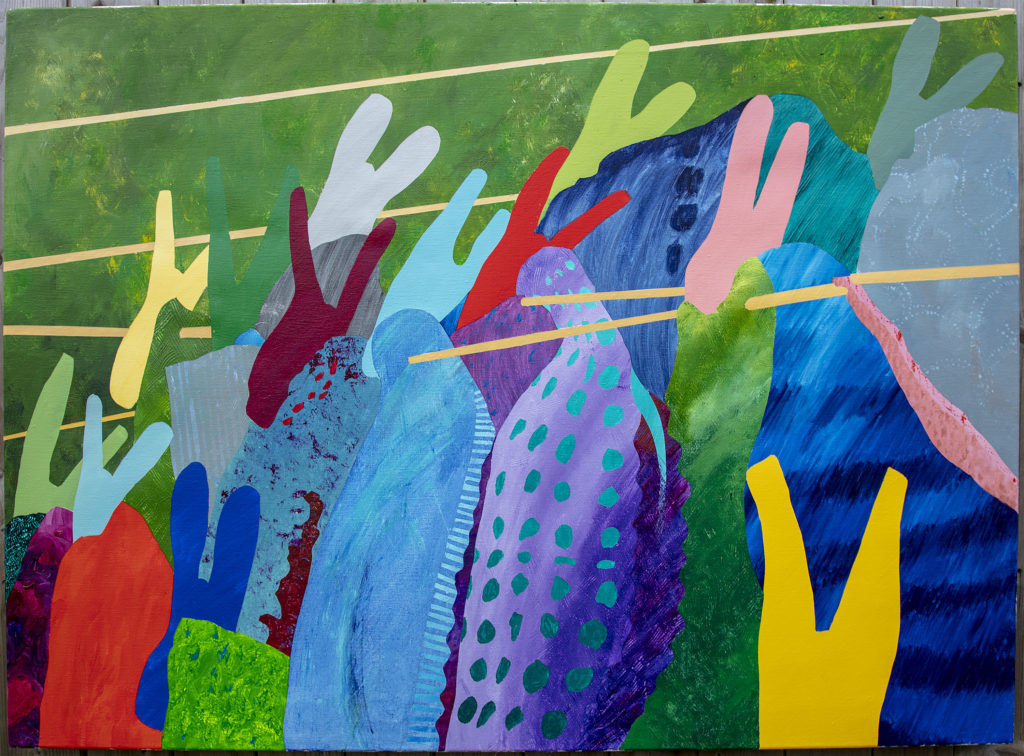
Recent Comments